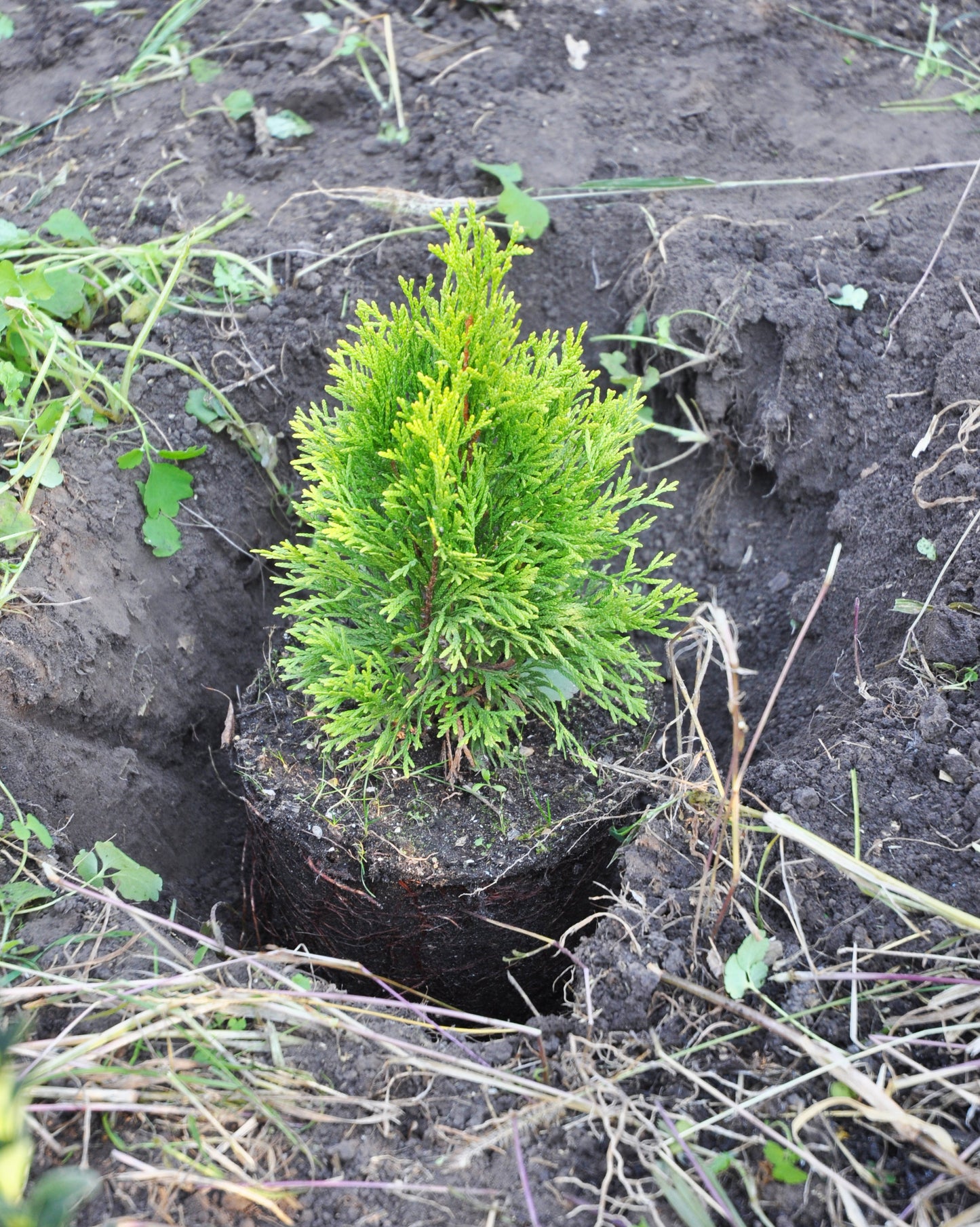
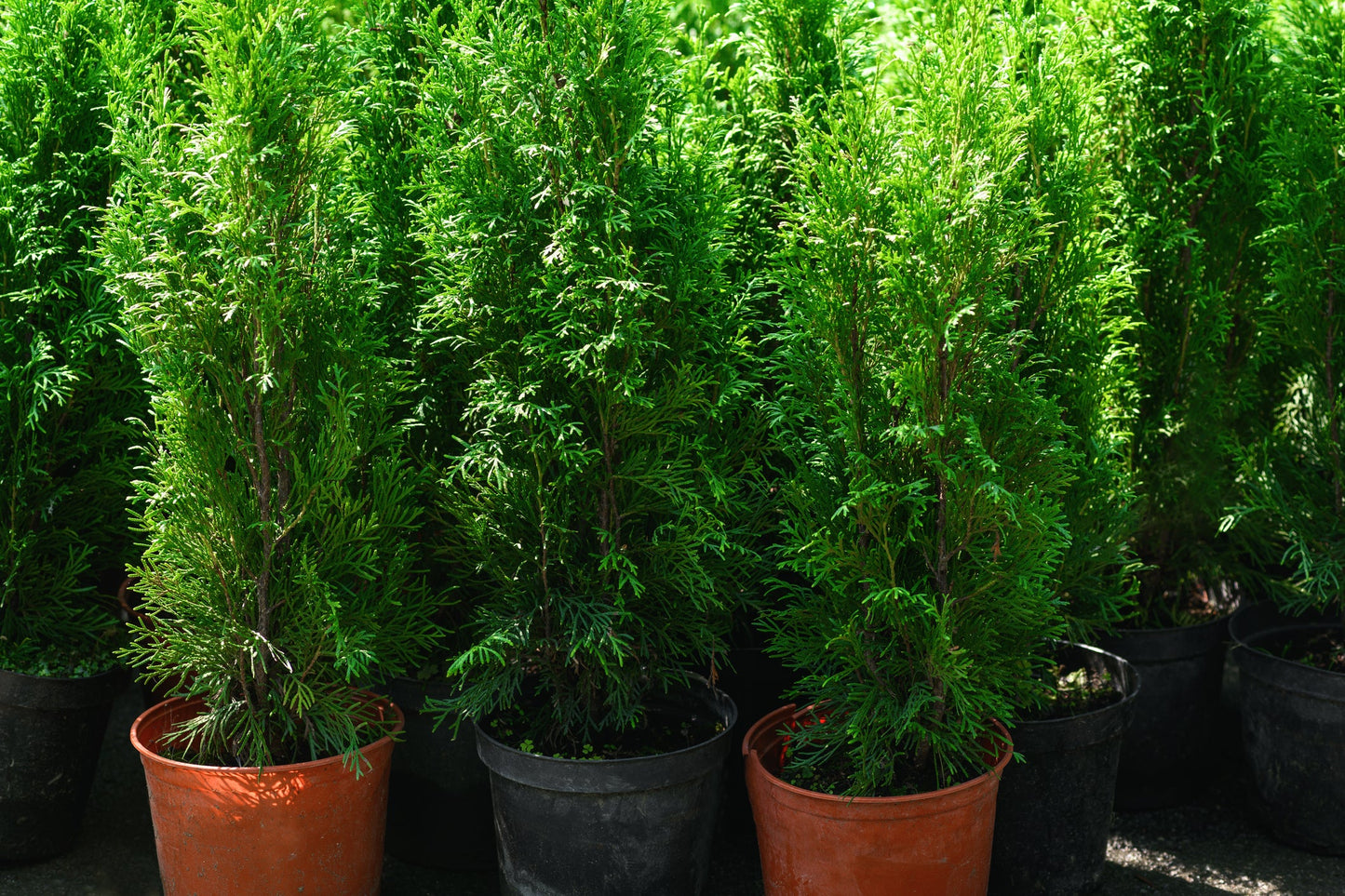
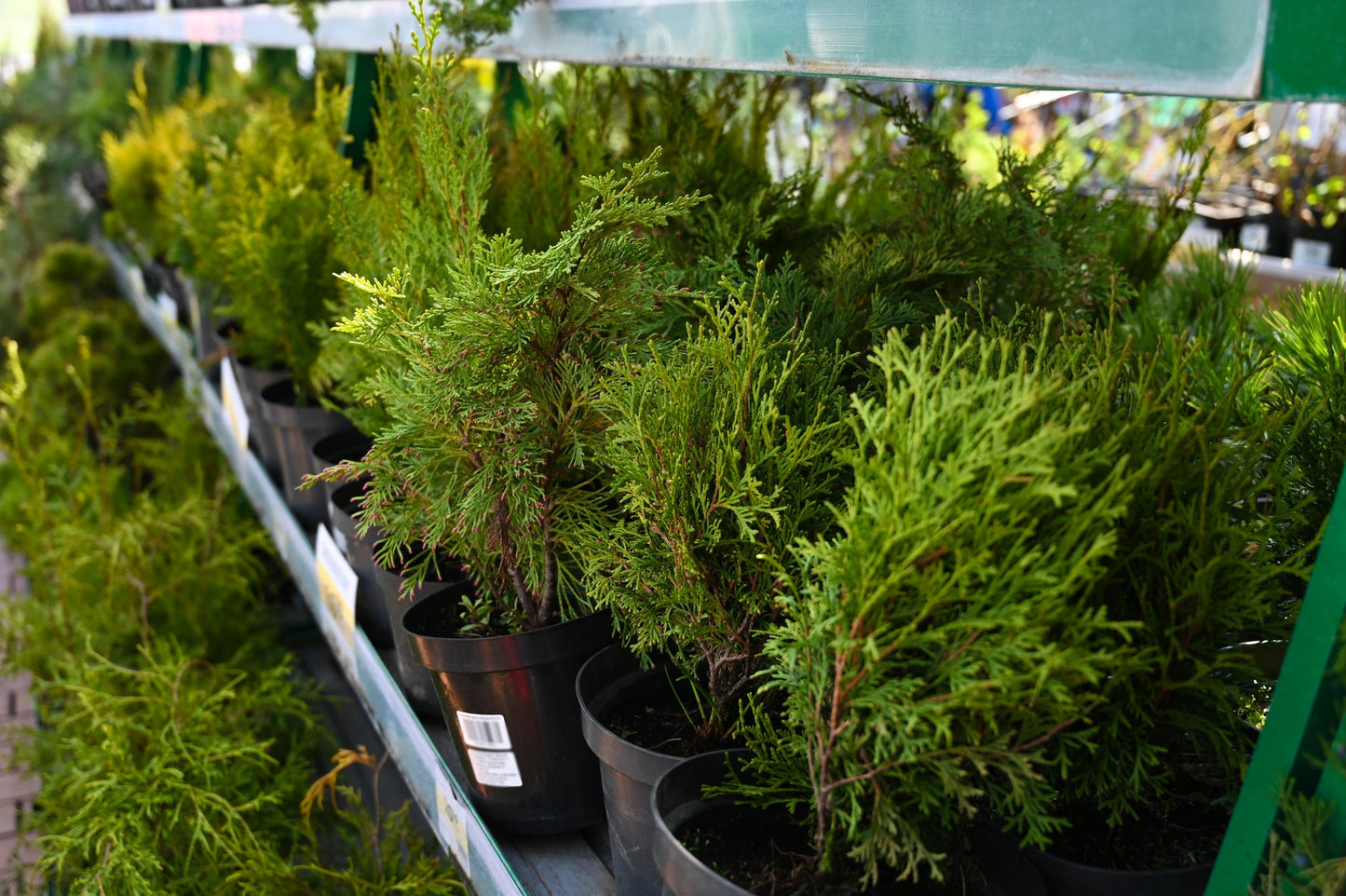
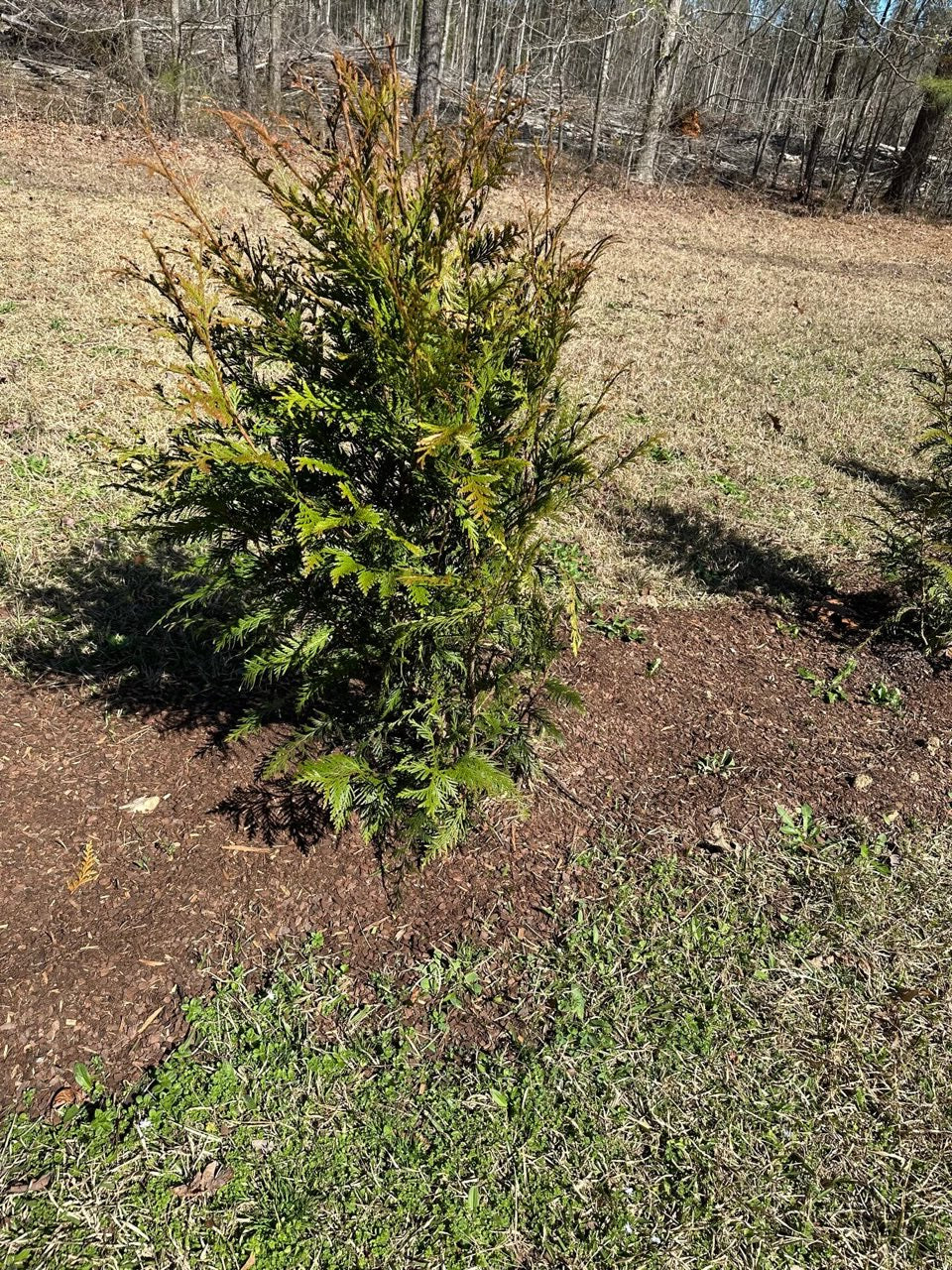
About Thuja Green Giants
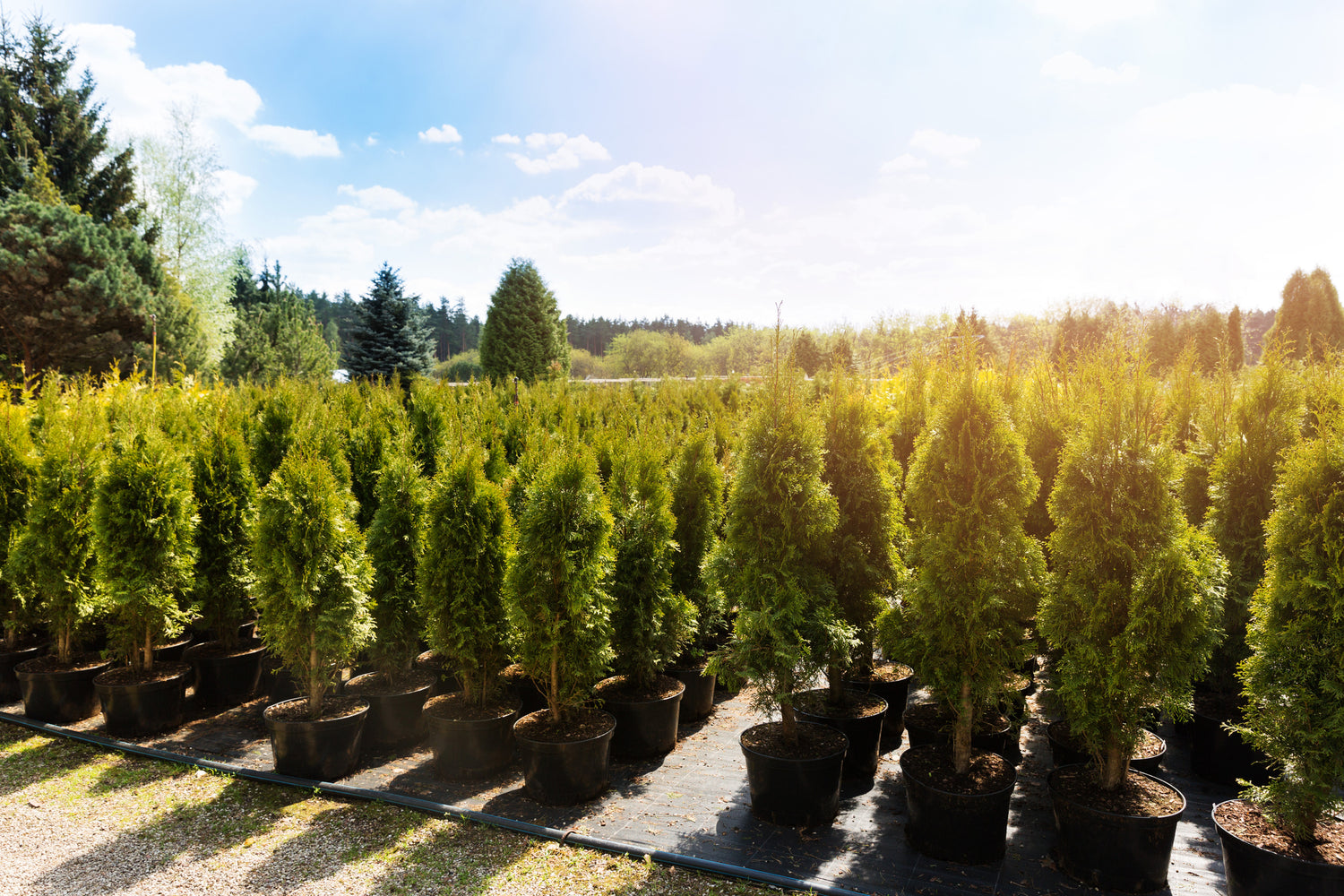
What to Know:
- It is important to note that Thuja Green Giant can become quite large and should be planted at a sufficient distance from buildings, sidewalks, and other structures to allow for its mature size. Additionally, it should be watered regularly until it is established, which typically takes 2-3 years.
- Have you ever looked for "Green giants for sale near me"? If so we can help! We sell Green Giants online and ship nationwide so we can sell you a Green Giants regardless of if you are in NC or somewhere else in the USA.
- Thuja Green Giant can be planted in a variety of soils, including clay, loam, and sand, and can tolerate a wide range of pH levels, from acidic to alkaline. However, it prefers well-drained soils.
Based In North Carolina
We specialize in selling Green Giants Nationwide, but are located in NC and and can ship quicly to any City or Town in NC . Below is a list of top cities inc NC with the corresponding USDA growing zones in parentheses next to each one:
- Charlotte (7b)
- Raleigh (7b)
- Greensboro (7b)
- Durham (7b)
- Winston-Salem (7b)
- Fayetteville (8a)
- Cary (7b)
- Wilmington (8b)
- High Point (7b)
- Greenville (8a)
- Asheville (7a)
- Concord (7b)
- Gastonia (7b)
- Jacksonville (8a)
- Chapel Hill (7b)
- Rocky Mount (8a)
- Huntersville (7b)
- Burlington (7b)
- Wilson (8a)
- Kannapolis (7b)
- Apex (7b)
- Hickory (7b)
- Morrisville (7b)
- Garner (7b)
- Monroe (8a)
- Holly Springs (7b)
- Matthews (7b)
- New Bern (8a)
- Sanford (7b)
- Statesville (7b)
- Asheboro (7b)
- Kinston (8a)
- Carrboro (7b)
- Mint Hill (7b)
- Thomasville (7b)
- Shelby (7a)
- Lumberton (8a)
- Cornelius (7b)
- Lexington (7b)
- Elizabeth City (8a)
- Clayton (7b)
- Roanoke Rapids (7a)
- Hope Mills (8a)
- Fuquay-Varina (7b)
- Pinehurst (8a)
- Newton (7b)
- Smithfield (7b)
- Tarboro (8a)
- Washington (8a)
- Henderson (7a)
Planting Zone
This tree is hardy in USDA hardiness zones 5 to 9, which means it can be planted in most of the United States, except for areas with very cold winter temperatures. It can tolerate full sun to partial shade, although it will grow faster with more sun.
How to Plant
- Choose the right location: Find a spot with well-drained soil and full sun to partial shade. Ensure there is enough room for the tree to grow to its mature size, typically 40-60 feet tall and 10-15 feet wide.
- Prepare the soil: Loosen the soil in the planting area to a depth of 12-18 inches. If the soil is heavy clay or poorly drained, mix in organic matter such as compost or peat moss to improve its structure.
- Dig the hole: Dig a hole twice the width and slightly shallower than the root ball of the tree. The top of the root ball should be level with the surrounding soil.
- Place the tree: Remove the tree from its container and gently loosen the roots. Place the tree in the hole, spreading the roots out evenly.
- Backfill the hole: Fill the hole with soil, tamping it down gently as you go to eliminate air pockets. Leave a shallow depression around the tree to hold water.
- Water thoroughly: Water the tree thoroughly, saturating the soil to the root level.
- Mulch: Spread a 2-3 inch layer of mulch around the tree, keeping it away from the trunk, to conserve moisture and suppress weeds.
Benefits
- Fast growth: Thuja Green Giant is one of the fastest-growing privacy trees, with a growth rate of 3-5 feet per year.
- Dense foliage: The tree has dense, vibrant green foliage that provides excellent privacy and wind protection.
- Low maintenance: Thuja Green Giants are low maintenance and resistant to pests and diseases. They are also tolerant of air pollution and soil conditions, making them a great choice for urban areas.
- Adaptable: This tree is adaptable to a variety of soils and can tolerate both full sun and partial shade, making it a versatile choice for many landscape designs.
- Long lifespan: With proper care, Thuja Green Giants can live for many years, providing privacy and beauty to your landscape for decades.
- Versatile: In addition to being used as a privacy screen, Thuja Green Giants can also be used as specimens, in groups, or as a hedge.
- Evergreen: As an evergreen tree, it retains its foliage all year round, providing year-round privacy and visual interest.
How We Ship
Each Thuja Green Giant is carefully packaged and all our trees are shipped potted, we do not ship any of our trees bare root. When you need Thuja Green Giants delivered to your front door give us a call.
Timeline of the History of Thuja Green Giants
- 1990s: Introduction of the Thuja Green Giant as a cultivar of the Western Red Cedar
- 1991: First introduced to the market as a fast-growing, low-maintenance privacy tree
- Mid 1990s: Becomes popular among landscapers and homeowners due to its fast growth rate and adaptability
- 2000s: Gains widespread popularity and becomes one of the most popular privacy trees in the United States
- Present Day: Continues to be a popular choice for privacy screening, windbreaks, and other landscaping purposes, due to its fast growth, dense foliage, and adaptability.
Thuja Green Giant Growth Chart
The Thuja Green Giant, a hybrid of Thuja standishii and Thuja plicata, is known for its fast growth rate. This evergreen tree is often chosen for hedges or privacy screens because of its ability to add substantial height each year. However, the exact growth rate can vary based on local conditions such as sunlight, water availability, and soil quality. Here is a general growth chart:
Year 1: After being planted, the tree will spend most of its energy establishing a healthy root system. You can expect the tree to grow approximately 1-2 feet in the first year, depending on its initial size at planting.
Year 2-5: Once the tree's root system is well established, its growth will significantly accelerate. It can grow 3-5 feet per year during this time under optimal conditions.
Year 6 and beyond: The tree will continue its rapid growth until it reaches maturity, typically around 60 feet. However, the growth rate might start to slow down as it approaches its maximum height.
Remember, these are average estimates. The actual growth rate of your Thuja Green Giant may vary based on environmental factors, care practices, and overall health of the tree. It's always a good idea to monitor the growth of your tree regularly and adjust care practices as necessary.
Why buy Green Giants from Thuja Supply?
-
Fast Growing
Thuja Green Giants are known for their fast growth rate, which is one of their key features. On average, they can grow up to 3-5 feet per year, with some individuals growing even faster. This means that in just 20 years, they can reach heights of up to 60 feet or more, making them one of the fastest-growing evergreen trees available.
-
Customer Service
- Quick and knowledgeable response to customer inquiries
- Easy-to-use online ordering system with secure payment options
- Clear and transparent return and exchange policies
- R
-
Warranty
6 Month Warranty on all Green Giants. We stand behind our trees, if your tree dies within 6 months we will either ship a replacement (you just pay shipping) or refund the cost of tree. We reserve the right to choose between the two option at our discretion
-
Free Shipping
- Free Shipping on all Order over $200
- We primarily ship UPS or Fedex
- We will email you the tracking number for you order as soon as it ships.
Green Giant Bulk Pricing Available
Check out our bulk discounts above by selecting 8 or 16 packs of trees.
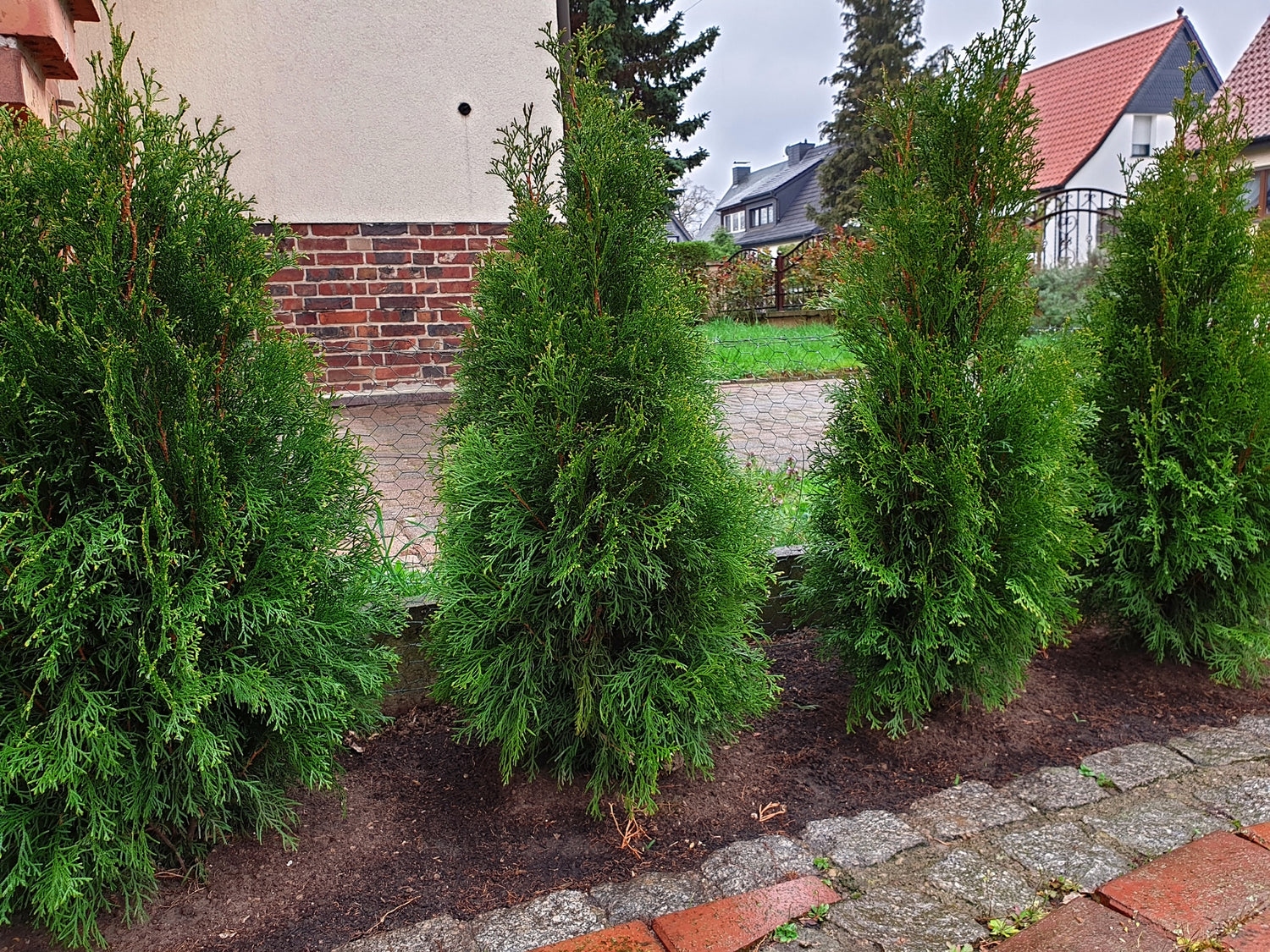
Buy quantity trees for any of the following reasons:
- Wholesale privacy trees
- Bulk evergreen trees for privacy
- Large quantity privacy trees
- Mass planting privacy trees
- Landscaping trees in bulk
- Affordable privacy trees in bulk
- Privacy trees for commercial projects
- Privacy trees for large properties
- Fast-growing privacy trees in bulk
- Bulk purchase of tall trees for privacy.
- Discounted Thuja Green Giants allow you to build large privacy screen for low cost.
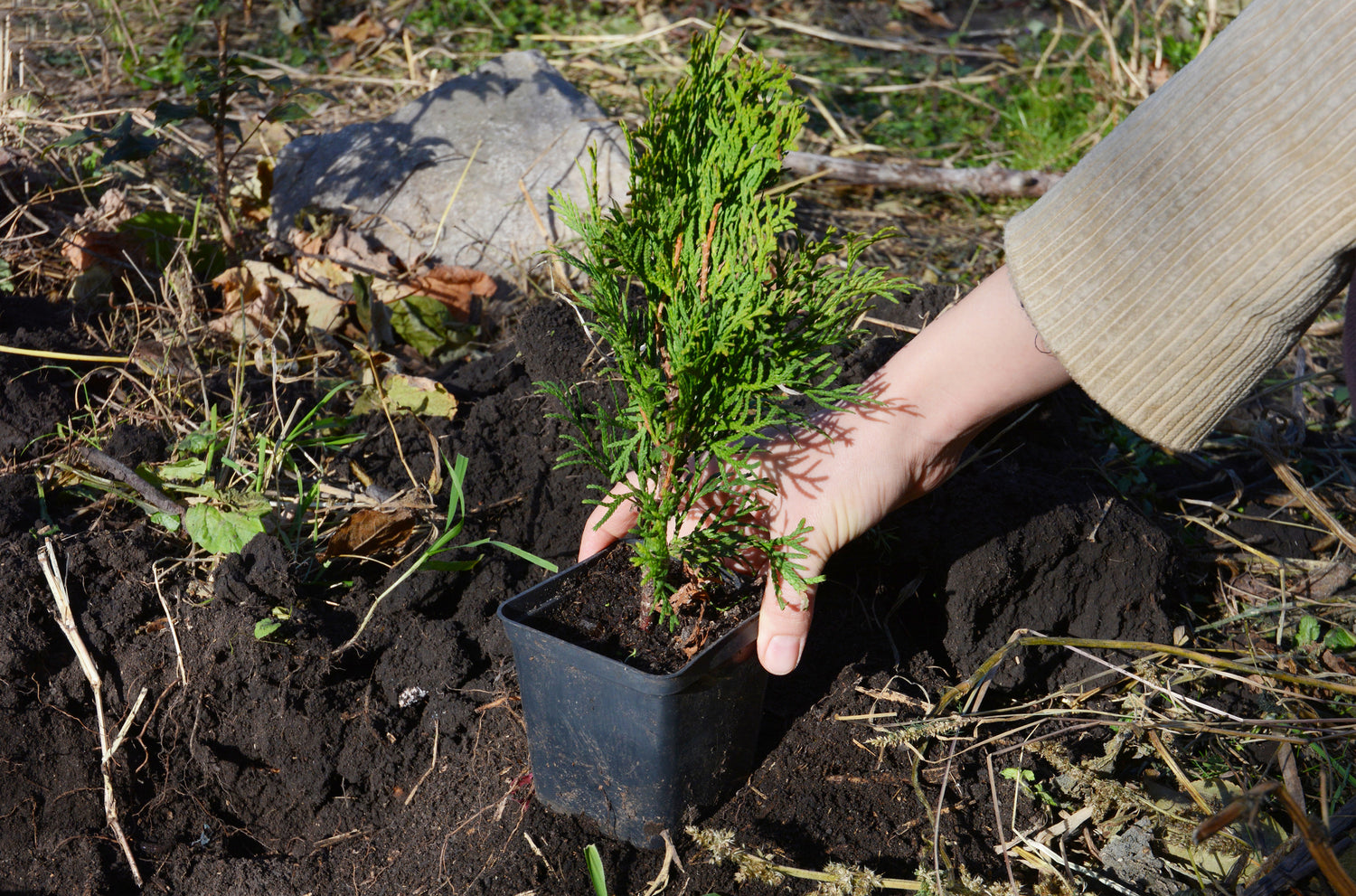
What can Green Giants be used for?
- Fast growing evergreen trees
- Privacy trees
- Windbreak trees
- Cedar-scented foliage
- Low-maintenance landscape trees
- Tall, slender trees
- Hardy evergreens
- Salt tolerant trees
- Adaptable trees for different soils
- Dense foliage trees for screening.
Everything to Know about Green Giants
Introduction to Green Giants
Thuja Green Giants are fast-growing evergreen trees that are popular for their tall, slender shape and lush green foliage. They are part of the Cupressaceae family and are native to North America. The scientific name for Thuja Green Giants is Thuja plicata 'Green Giant'.
Appearance of Thuja Green Giants
Thuja Green Giants are known for their ability to grow quickly, reaching heights of up to 60 feet in 20 years. They have dense, lush foliage that provides a green canopy throughout the year, making them an excellent choice for privacy screening and windbreaks. The foliage is a soft green color and has a fresh aroma that resembles cedar.
Adaptability of Thuja Green Giants
Thuja Green Giants are versatile and can adapt to a range of soils and growing conditions. They are not picky about soil type and can grow well in both clay and sandy soils, as long as the soil is well-drained. They are also tolerant of a wide range of pH levels and are highly resistant to pests and diseases.
Hardiness of Thuja Green Giants
Thuja Green Giants are hardy in USDA zones 5-8 and can survive temperatures as low as -20°F. They are also wind-resistant and able to tolerate salt spray, making them a good choice for planting near roads and highways.
Potential Problems with Green Giants
There are several problems that can occur with Thuja Green Giants, which is a popular evergreen tree used for privacy screens and hedges. Here are some of the most common problems:
- Browning: If your Thuja Green Giants start to turn brown or yellow, it could be a sign of stress due to inadequate watering, poor soil drainage, or too much or too little sunlight.
- Disease: Several diseases can affect Thuja Green Giants, including root rot, canker, and blight. Symptoms may include yellowing or browning needles, resinous cankers on the trunk or branches, and dieback.
- Pest infestations: Arborvitae leafminer, spider mites, and bagworms are common pests that can infest Thuja Green Giants. Signs of infestation may include distorted or discolored foliage, webbing, and visible caterpillars or larvae.
- Wind damage: Thuja Green Giants have a narrow, columnar shape that makes them susceptible to wind damage. In severe cases, the tree can become uprooted or broken.
- Planting location: Thuja Green Giants prefer well-draining soil and full sun to partial shade. If they are planted in poorly draining soil or in a location with too little sunlight, they may struggle to thrive.
To prevent these problems, it's important to choose a healthy, disease-free plant and to plant it in a location that meets its growing requirements. Providing regular watering, proper fertilization, and annual pruning can also help keep your Thuja Green Giants healthy and vigorous. If you notice any signs of stress, disease, or pest infestation, contact a certified arborist for assistance.
Planting and Care for Thuja Green Giants
Thuja Green Giants are easy to care for and are typically planted as saplings. They require full sun and should be planted in a location that receives at least 6 hours of direct sunlight each day. Regular watering is necessary, especially during the first few years after planting, to establish a strong root system. They do not require much pruning and are low-maintenance, although a balanced fertilizer can be applied once a year to promote healthy growth.
Aesthetics of Thuja Green Giants
Thuja Green Giants add a beautiful and green element to any landscape. Their tall, slender shape provides a vertical element, and their lush green foliage can be used as a focal point or a backdrop for other plants. They are also great for creating privacy screens, as they grow quickly and provide a dense green barrier.
Green Giants Turning Brown in Winter
It is normal for Thuja Green Giants to turn brown or bronze during the winter months, especially in colder regions. This is a natural process known as winter bronzing or winter burn, and it occurs when the tree loses more water through its leaves than it can replace through its roots.
Winter bronzing is generally not harmful to the tree, and the foliage should return to its normal green color in the spring when new growth appears. However, in severe cases, the tree may suffer from desiccation and dieback.
To help prevent winter bronzing, you can take the following steps:
- Water the tree regularly during the fall to help it build up its water reserves before winter.
- Apply a layer of organic mulch around the base of the tree to help retain moisture in the soil.
- Wrap the tree with burlap or a similar material to help protect it from harsh winter winds.
- Avoid pruning the tree in the fall or winter, as this can stimulate new growth that is more susceptible to winter damage.
- Consider planting Thuja Green Giants in a location that is sheltered from strong winter winds and receives ample sunlight.
Remember, some winter bronzing is normal and should not cause concern.
Summary
Thuja Green Giants are a versatile and low-maintenance tree that are ideal for a range of landscaping purposes. They are hardy, adaptable, and provide a lush green element to any garden. Whether you are looking to create a privacy screen, a windbreak, or just add a beautiful green element to your landscape, Thuja Green Giants are definitely worth considering.
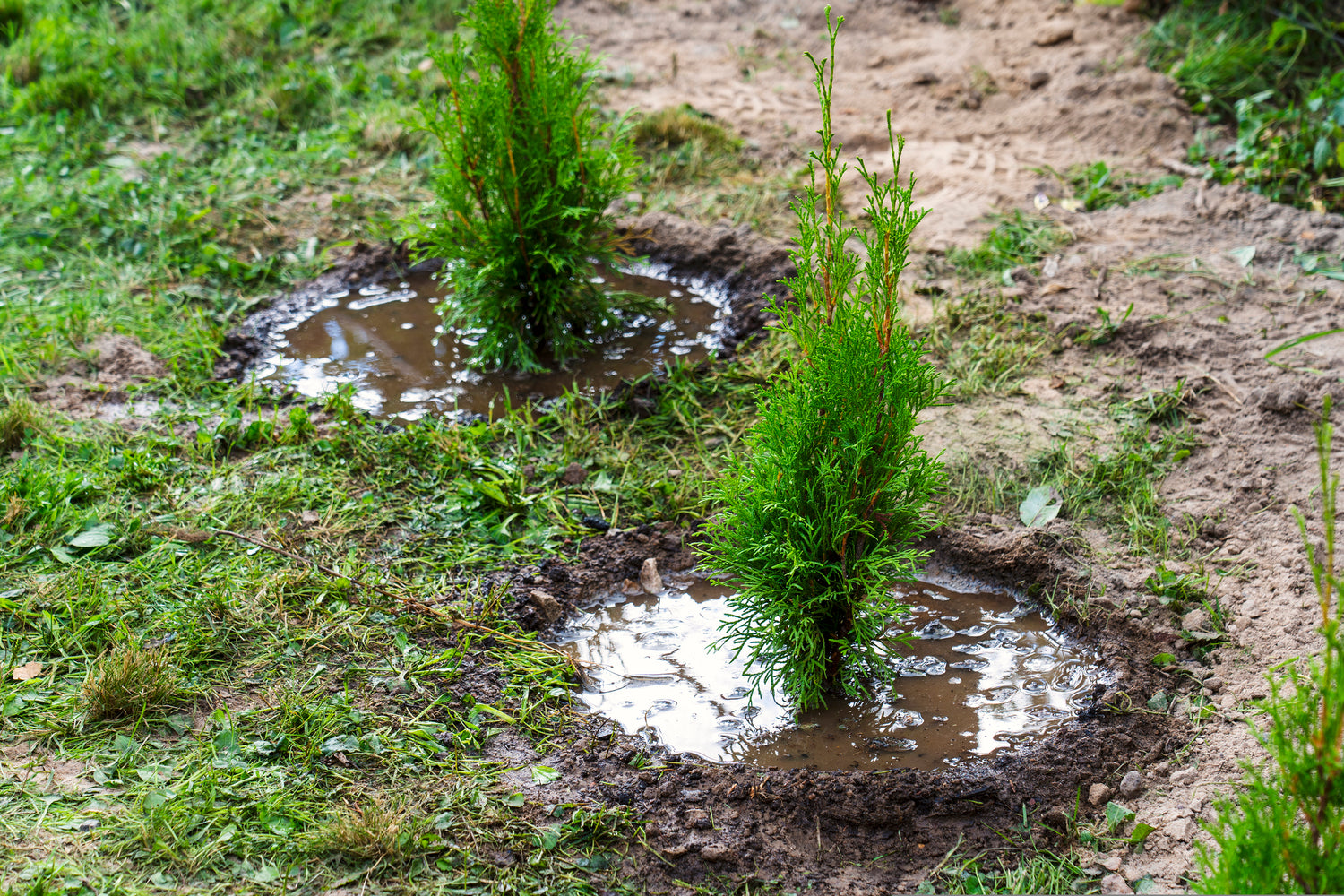
When to Plant
Recommended Planting Times based on Hardiness Zone:
- 3 - 4 Early spring or late summer
- 5 - 6 Spring or early fall
- 7 - 8 Fall or winter
- 9 - 10 Fall or winter
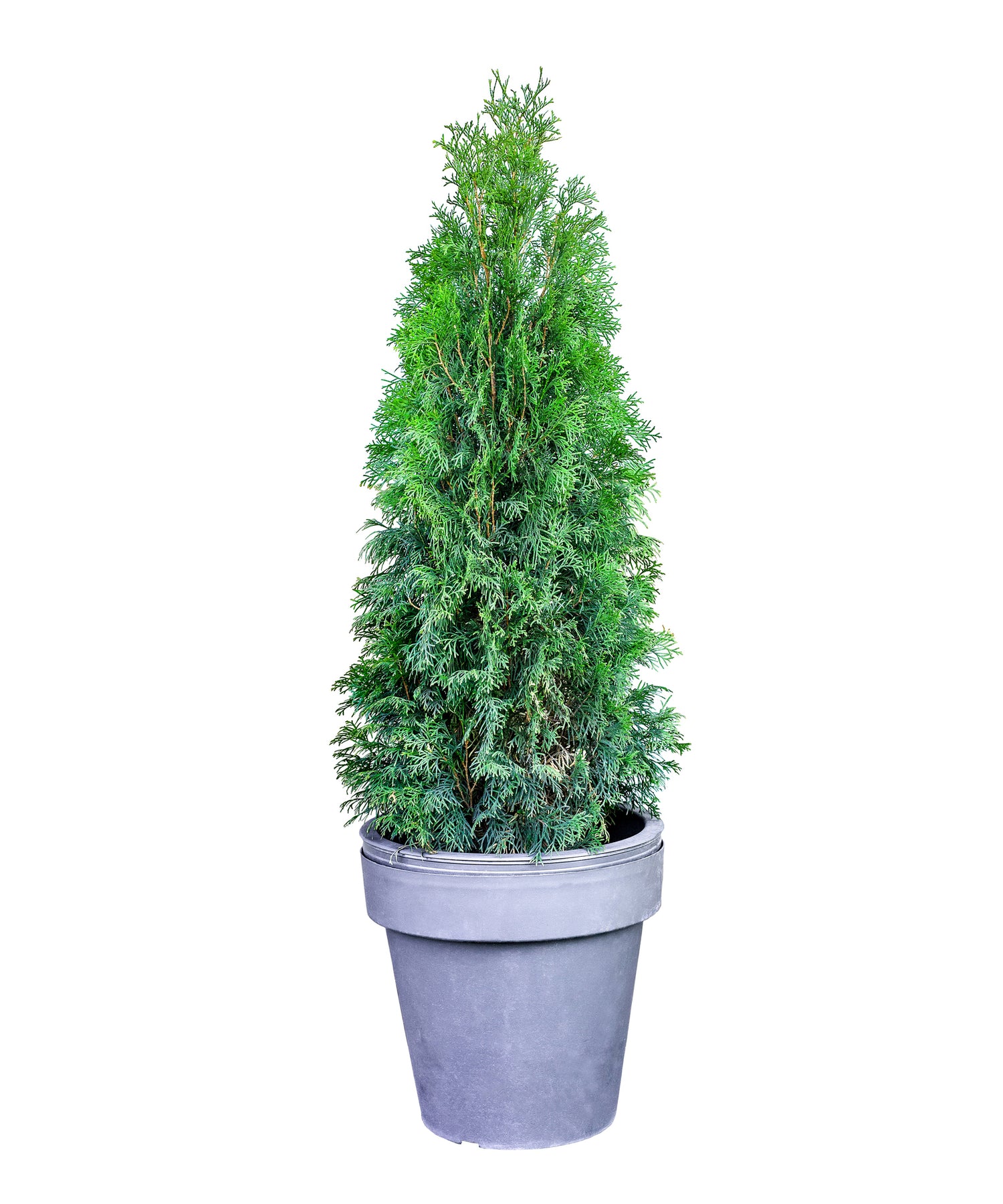
Everything to Know about Green Giants
Read Articles25 FAQs about Thuja Green Giants
Thuja Green Giant is a hybrid evergreen tree known for its fast growth and disease
Thuja Green Giant is a hybrid evergreen tree known for its fast growth and disease resistance. It is a cross between the western redcedar (Thuja plicata) and the Japanese thuja (Thuja standishii).
2. How fast do Thuja Green Giants grow?
Thuja Green Giants can grow up to 3-5 feet per year until maturity.
3. What is the height of a mature Thuja Green Giant?
Mature Thuja Green Giants can reach heights of 50-60 feet.
4. What is the ideal climate for Thuja Green Giants?
Thuja Green Giants are hardy and adaptable, but they thrive best in USDA hardiness zones 5-9.
5. How much sun do Thuja Green Giants need?
They prefer full sun to partial shade, with at least four hours of direct sunlight each day.
6. What type of soil is best for Thuja Green Giants?
Thuja Green Giants can adapt to a variety of soil conditions but prefer well-drained loamy or sandy soil.
7. Are Thuja Green Giants drought-resistant?
Once established, Thuja Green Giants are relatively drought-tolerant but will benefit from regular watering during prolonged dry periods.
8. Do Thuja Green Giants attract any pests or diseases?
While generally resistant to many pests and diseases, they can occasionally be affected by bagworms, spider mites, and fungal diseases.
9. Can Thuja Green Giants be pruned?
Yes, Thuja Green Giants respond well to pruning. Regular trimming will keep the trees dense and maintain the desired shape.
10. What is the lifespan of a Thuja Green Giant?
With proper care, Thuja Green Giants can live for several decades.
11. How far apart should Thuja Green Giants be planted?
For a privacy screen or hedge, plant them about 5-6 feet apart. For individual trees, leave a space of at least 10-12 feet.
12. Are Thuja Green Giants deer-resistant?
Thuja Green Giants are considered deer-resistant, but in areas with high deer populations, they may still be vulnerable to browsing.
13. Are Thuja Green Giants suitable for container growing?
While possible, their large size makes them less suitable for container growing unless regularly pruned to maintain a smaller size.
14. Do Thuja Green Giants produce any flowers or fruits?
Thuja Green Giants produce small, inconspicuous cones rather than flowers or fruits.
15. How do Thuja Green Giants compare to Leyland Cypress trees?
Both are fast-growing evergreen trees used for privacy screens, but Thuja Green Giants are generally more disease-resistant.
16. Are Thuja Green Giants poisonous to pets?
Yes, the leaves and other parts of the plant can be toxic to pets if ingested.
17. Do Thuja Green Giants provide good privacy screens?
Yes, thanks to their dense foliage and fast growth, they make excellent privacy screens.
18. How often should Thuja Green Giants be watered?
Newly planted trees need watering every 2-3 days. Once established, they can be watered deeply once a week.
19. Can Thuja Green Giants tolerate salty soil or air?
They have moderate salt tolerance, but it's best to avoid planting them in highly saline soils or in coastal areas with salty air.
20. Can Thuja Green Giants be propagated?
Yes, they are commonly propagated from semi-hardwood cuttings.
21. When is the best time to plant Thuja Green Giants?
The best time to plant Thuja Green Giants is in the early spring or fall.
22. Can Thuja Green Giants be used for windbreaks?
Yes, their height, density, and fast growth make them an excellent choice for windbreaks.
23. What kind of maintenance do Thuja Green Giants require?
They require minimal maintenance once established but will benefit from regular watering, annual mulching, and occasional pruning.
24. Can Thuja Green Giants grow in shade?
While they can tolerate partial shade, they grow best in full sun.
25. Are Thuja Green Giants invasive?
No, Thuja Green Giants are not considered invasive in the United States.





